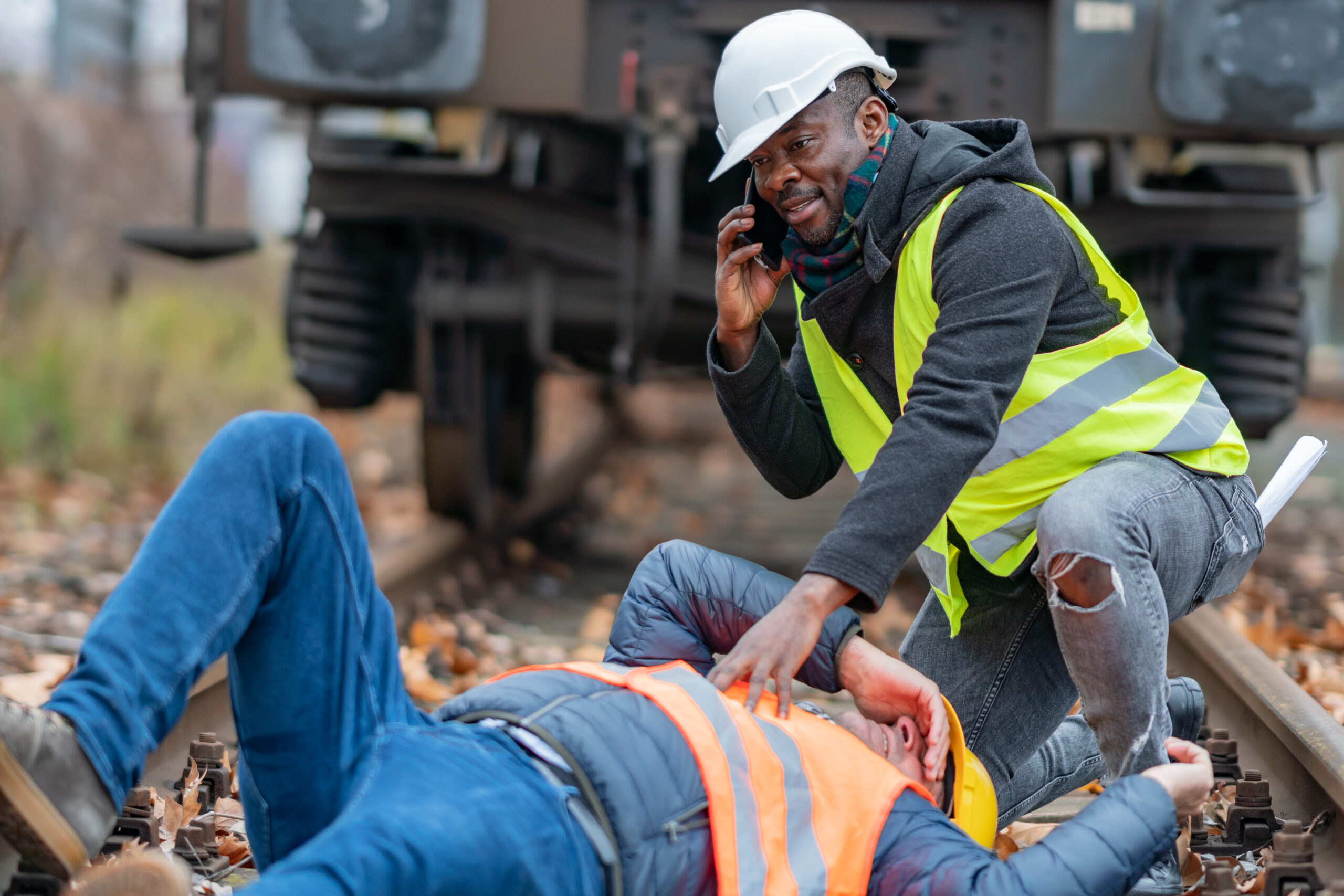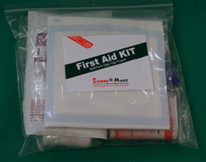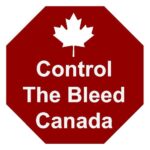More than just a first aid Response Training certificate
First Aid Response training Increases Profits
Workplace injuries drain profits by increasing downtime and decreasing productivity. Negative publicity can also seriously harm an organization’s reputation.
Workplace injuries raise WSIB costs and may lead to prosecution under the Occupational Health and Safety Act, resulting in heavy fines and legal costs, or even charges under the Criminal Code of Canada.
First-aid-trained individuals tend to be more safety-conscious, aware of hazards, and are more likely to comply with workplace safety practices and procedures.

Why Our First Aid Response Training Is Different
Code Eight training is realistic. Our instructors use theatrical blood and injuries to create scenes that look and feel real. Not just in the classroom, but on the shop floor, the offices, shipping dock, warehouse, etc.
Scenario first aid response training allows the student to understand what to expect when the real thing happens. They learn to practice scene safety and deliver emergency care where they work.
Our team approach turns individual First Aiders into a First Aid Team, trained to work together, giving the ill or injured person the best chance of survival and recovery.
Free With Emergency or Standard Course

Emergency Personal First Aid Kit
($19.95 Value)
PLUS

Control the Bleed Canada Course
($19.95 Value)


Required for workplaces with five or fewer workers per shift and some specific occupations such as Security Guard.
Required for workplaces with more than five workers per shift and many specific occupations including police, fire, and corrections officers.
Click Each Section For More Details
Emergency/Basic First Aid, CPR and AED courses covers essential First Aid, CPR and AED skills. Blended emergency training consists of a 16 section on-line self study portion and a four hour in-person skills session. Listed below are the topics covered in Emergency First Aid.
Understanding the Emergency Medical System and the role of a First Aider. First Aid definition and goals. Legal issues in rendering emergency care including the Good Samaritan Act.
Surveying the incident scene for hazards to protect the rescuer and others. Identifying life-threatening situations and providing urgent care. Looking for other injuries or problems while providing on-going care. Transferring the victim to more appropriate care and after incident procedures such as writing notes and making reports.
Identify and treat life threatening conditions including breathing, bleeding, chest, pelvic and thighbone injuries. Use spinal precautions, recovery position and awareness of shock.
Monitoring, comforting and reassuring the victim. Transferring care to professional responders or a health care facility.
Basic understanding of the circulatory system, narrowing arteries and high blood pressure. Angina and heart attack signs and symptoms. Recognizing possible stroke. Actions needed in a heart or stroke situation including assisting the victim with their own medications.
Sudden Cardiac Arrest results from a disruption to the heart’s electrical system. Understanding that this can happen to anyone, at any age even with no previous heart conditions. Recognize the signs of cardiac arrest and understand that every second counts in providing rapid care.
Only rapid action might save the life of a sudden cardiac arrest victim. These actions include: Early recognition and activating 9-1-1. Early CPR to buy some time. Rapid defibrillation to treat the underlying heart electrical malfunction. Rapid advanced cardiac life support and advanced care in a post cardiac arrest treatment facility.
Checking responsiveness, providing chest compressions and opening the airway are all important first steps. Discussing whether a rescuer should breathe for the patient. Mechanics of CPR positions for adult, child and infant and delivering high quality chest compressions. Individual and Team CPR.
Defibrillators are small, lightweight, portable and battery operated devices that provides and electric shock to a fibrillating (quivering) heart. Using the AED is simple and straightforward. Prepare the chest, attach the electrodes and follow instructions.
Recognize the difference between mild and severe choking. Understand the treatment options for conscious, unconscious and pregnant choking victims.
Recognize and treat severe life-threatening bleeding situations with direct pressure or military style tourniquets and wound packing techniques.
Recognize internal bleeding. Treat amputations, abdominal injury, minor head and facial wounds, nose bleeds and other common bleeding conditions.
Understand different types of wounds and learn to clean and disinfect a wound with BZK Towelettes. Using adhesive bandages, dressings and bandaging materials.
All bites are potentially dangerous. Snake and insect bites may involve dangerous venoms which can cause major bleeding, breathing distress and allergic reactions. Ticks and leech bites may cause infections and lyme disease.
Burn scene safety and prevention measures. Burn classification by mechanism, depth of injury and severity. Treating thermal, chemical, electrical and radiation burns.
Recognizing and treating diabetic, epileptic, asthmatic and allergic reaction emergencies.
Standard/Intermediate First Aid, CPR/AED is a more in depth training program consisting of a 25 section on-line self study portion (including Emergency First Aid) and an eight hour in-person skills session. Listed below are the additional topics covered in Standard/Intermediate First Aid.
The Secondary Survey includes gathering and recording important information including vital signs (pulse, respirations, skin condition, eye reactivity and level of awareness) patient history and a head to toe survey to determine other injuries.
Teamwork is essential when dealing with a serious illness or injury. Whether as part of a workplace response team or pulling various people out of a crowd to help, the Team approach co-ordinates the actions of everyone to deliver the best possible care to the ill or injured person.
Stresses the steps that first aiders must take to protect themselves from potentially deadly diseases like AIDS-HIV, Hepatitis C, Meningitis, COVID-19 and many others. In the scene survey identify hazards you can see, hear, feel and smell. With biohazards what you can’t see can kill you.
Explores the relationship of time from injury to critical surgical intervention. Sixty minutes, The Golden Hour, is a concept developed by Dr. R Adams Cowley, founder of the world’s’ first shock-trauma centre in Baltimore. Basic understanding of the stages of shock and that shock kills. Discusses the importance of an Emergency Medical Response Plan.
Types of poisons and how they enter the body including prevention strategies. Importance of incident history and victim signs and symptoms. Basic first aid measures and contacting poison control.
Reviews methods to prevent eye injury. Explains how to examine the eyes and to remove a small particle from the eye as well as treatment of an object embedded in the eye. Includes avulsed eye, wounds around the eye and burns to the eye.
Significance of heat loss and first aid for frostbite and hypothermia. Recognizing heat illnesses including heat stroke.
Injuries to bone, muscle and tendons range from simple sprains and strains to dislocations and fractures. Stabilizing the head and neck is important to prevent further spinal cord damage. Chest injuries may impede respirations. Pelvic and skeletal injuries can result in life-threatening bleeding.
Preparing for emergency childbirth and delivery complications. Caring for baby and mother. After birth considerations including caring for the umbilical cord and placenta. Caring for the mother after miscarriage.